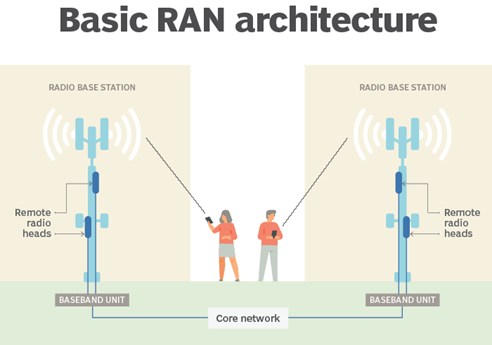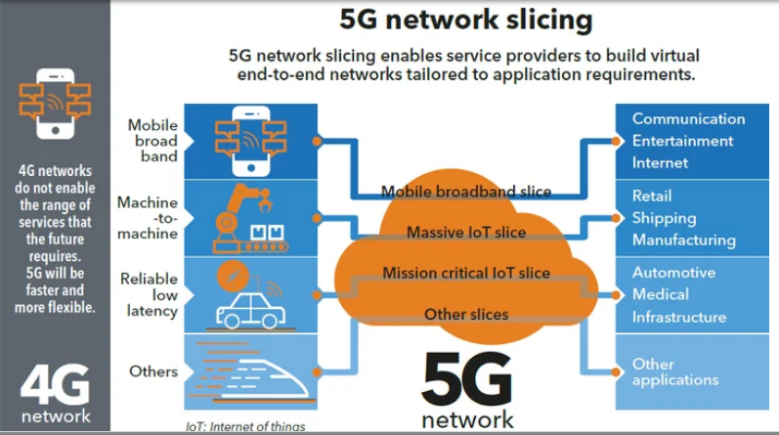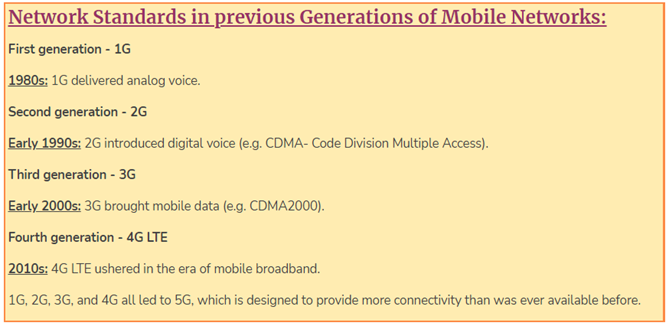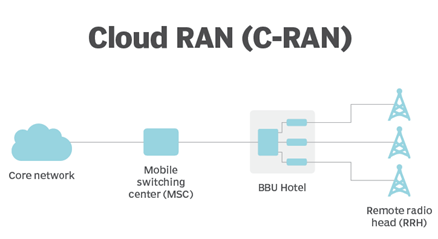Description

Disclaimer: Copyright infringement not intended.
Context
- C-DOT signs agreement with Galore Networks for collaborative development of end-to-end 5G Radio Access Network (RAN) products & solutions.
What is radio access network?
- A radio access network (RAN) is a major component of a wireless telecommunications system. RAN is the part of a mobile network that connects end-user devices, like smartphones, to the cloud. This is achieved by sending information via radio waves from end-user devices to a RAN’s transceivers, and finally from the transceivers to the core network which connects to the global internet.
- A RAN provides access and coordinates the management of resources across the radio sites. A handset or other device is wirelessly connected to a backbone, or core network, and the RAN sends its signal to various wireless end points, so it can travel with other networks’ traffic. A single handset/phone could be connected at the same time to multiple RANs, which is sometimes called dual-mode handsets.
- Specifically, cell phones and other devices send and receive radio signals from the RAN network’s radio transceivers to connect to the core network.
Components of RAN
A RAN is made up of three essential elements:
- Antennas convert electrical signals into radio waves.
- Radios transform digital information into signals that can be sent wirelessly and ensure that transmissions are in the correct frequency bands with the right power levels.
- Baseband units (BBUs) provide a set of signal processing functions that make wireless communication possible. Traditional baseband uses custom electronics combined with multiple lines of code to enable wireless communication, typically using the licensed radio spectrum. BBU processing detects errors, secures the wireless signal and ensures that wireless resources are used effectively.
The term radio access network (RAN) has been in use since the beginning of cellular technology and has evolved through the generations of mobile communications (from 1G up to 5G today).

How does a RAN work?
- At high level, modern RAN networks utilize radio transceivers to connect devices to the internet. RAN base stations that are part of a public mobile network are connected via fiber cables, microwave or other methods and aggregate signals to be sent to the public mobile core network. This is often referred to as backhaul.
- A RAN provides access to and coordinates the management of resources across the radio sites. A handset or other device is wirelessly connected to the backbone, or core network, and the RAN sends its signal to various wireless endpoints so it can travel with traffic from other networks. A single handset or phone could be connected at the same time to multiple RANs, sometimes called dual-mode handsets.
- In second generation (2G) and third generation (3G) RAN architecture, the RAN controller manages the nodes connected to it. The RAN's network controller -- which manages radio resources, mobility and data encryption -- connects to the circuit-switched core network and the packet-switched core network, depending on the type of RAN.
- With the advent of 4G LTE and an all-IP network, the layout of the radio access network has changed. In particular, the introduction of C-RAN has split the radios and antennas from the baseband controller to adapt better to the modern demands of mobile devices.
- Today, RAN architecture divides the user plane and the control plane into separate elements. The RAN controller can exchange one set of user data messages through a software-defined networking switch and a second set through a control-based interface. This separation enables the RAN to be more flexible, accommodating the network functions virtualization techniques, such as network slicing and high MIMO, that are necessary for 5G.
- Thus, the very latest RANs often feature a controller which uses software-defined networking (SDN) to control cellular device coverage and capacity. By leveraging software and network function virtualization (NFV) these signals are able to be processed and transmitted at the speed and capacity needed to support 5G and future generation technologies.
|
Network Slicing
· 5G network slicing is the use of network virtualization to divide single network connections into multiple distinct virtual connections that provide different amounts of resources to different types of traffic.
MIMO (5G)
· MIMO or ‘multiple-input, multiple-output’ is a wireless technology/ radio antenna technology that, when deployed, uses multiple antennas at both the source (transmitter) and the destination (receiver).
· This allows for more data to be sent and received at the same time, unlike in conventional wireless communications where only a single antenna is used.
· MIMO utilises a natural radio-wave phenomenon known as ‘multipath’ or ‘multipath wave propagation’.

|
What is RAN in 5G?
- The 5G New Radio (5G NR) standard is the latest radio interface and radio access technology for 5G cellular technology.
- The interface supports multiple frequency bands, including sub-6 gigahertz bands and millimeter wave (mmWave) bands, such as 24 GHz, 28 GHz and higher.
- The mmWave band offers 1+ gigabits per second download speeds, but they have reduced ranges compared to sub-6 GHz services.


Types of Radio access network types
RAN trends include the following:
- Open RAN: It involves developing interoperable open hardware, software and interfaces for cellular wireless networks that use white box servers and other standard equipment, rather than the custom-made hardware typically used in base stations.
- C-RAN separates the radio elements in a base station into remote radio heads (RRHs). These can be used atop the cell towers for the most efficient radio coverage. RRHs must be connected to centralized baseband controllers via fiber or microwave radio links. Most baseband processing uses standard white box servers.

- Global System for Mobile communications (GSM) RAN, or GRAN, was developed for 2G.
- GSM EDGE RAN, or GERAN is similar to GRAN, but it specifies the inclusion of Enhanced Data GSM Environment packet radio services.
- Universal Mobile Telecommunications System (UMTS) Terrestrial RAN, or UTRAN, came about with 3G.
- Evolved Universal Terrestrial RAN, or E-UTRAN, is part of LTE.
Key Takeaways
- A Radio Access Network (RAN) consists of a baseband unit, radio unit or remote radio unit, antennas, and software interfaces.
- Data from a user reaches the network core after being received by a radio unit and transformed into a digital format by a baseband unit.
- Different generations of mobile networks use different variations of RANs.
- The future of RANs will be heavily influenced by 5G deployments and the push for open source RANs.
https://www.pib.gov.in/PressReleasePage.aspx?PRID=1836787
1.png)


















